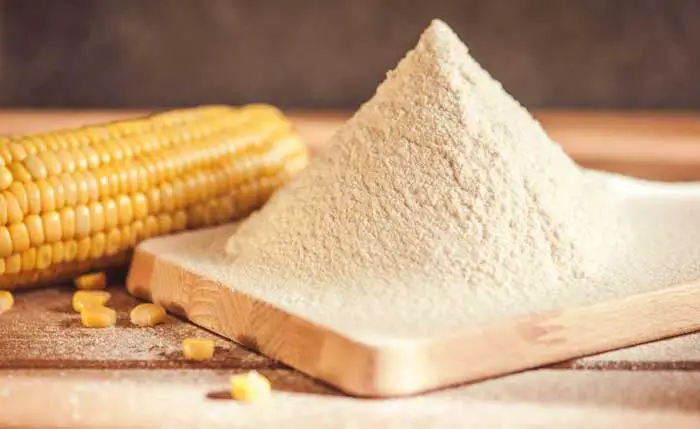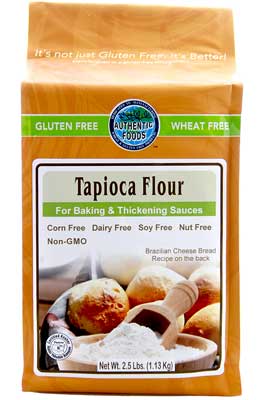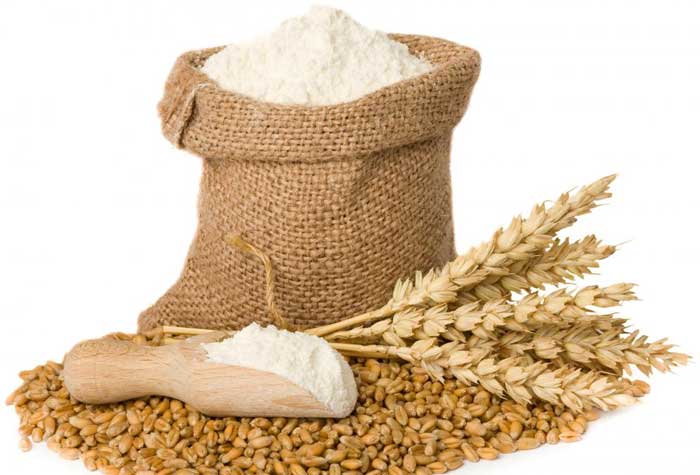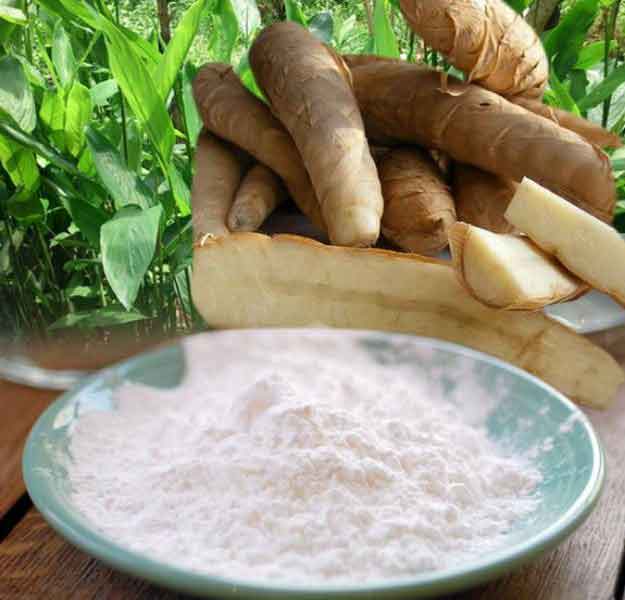If you are looking for corn substitutes, indeed there are a number of alternatives including tapioca, wheat, rice, arrow root and potato flours. Read on to find why it is necessary to replace plus nutrition facts of the alternates.
Corn flour substitutes
Why substitute Corn Flour/Starch
Corn flour is made by grinding whole corn kernels into fine powder, and it is used primarily in baking and breading. Corn meal is also made from ground corn kernels but has a coarser texture than corn flour.

Some of the reasons you should substitute corn and corn products with other substitutes it is because corn and corn products have some side effects to your body which include the following:
- Causes allergic reactions. When you consume corn it can lead to skin allergies, asthma attack and anaphylaxis due to the indigestible protein in it.
- Increases the risk of pellagra. If you consume corn in high amounts you can be at a risk of pellagra. This is because corn is deficient in lysine, tryptophan and niacin amino acids.
- Increases blood sugar levels for diabetic patients. Corn is high in simple carbohydrates so when diabetic patients consume corn in large amounts it increases the blood sugar levels.
- Causes bloating and flatulence. It contains a high percentage of starch. When you consume it is broken down in the large intestine and produces a lot of gas leading bloating and flatulence.
- Causes indigestion and stomach upset. It is a good source of fiber and other vital nutrients which helps in flushing out toxins from your body but an overdose of these can be bad for your stomach.
- Causes intestinal irritation and diarrhea. When corn is consumed raw it can result in diarrhea and can also lead to many intestinal disorders.
- Causes tooth decay. Corn contains a good amount of sugars, so it can lead to tooth decay in some people even though it is a relatively rare side effect of it.
- Causes osteoporosis. If you depend on corn diet you can suffer from osteoporosis as corn contains little amount of calcium.
- Increases weight. Corn is high in sugar and carbohydrate therefore overconsumption of corn make you gain weight.
- Leads to lethargy. Corn contains a large amount of starch which can cause drowsiness and lead to lethargy.
Corn Flour Substitutes
Tapioca flour plus nutrition
Tapioca flour also known as tapioca starch is a grain flour made from cassava root. It is a starchy, slightly sweet flavor to it that is a staple for gluten free baking. It is also a good ingredient for thickening soups, sauces and pie fillings. Tapioca is one of the purest forms of starch food, and the production process varies from region to region.
Tapioca flour is an alternative to traditional wheat flours and it contains a variety of uses in baking. It is made from starch extracted from the South American cassava plant. Tapioca can also be a dried product and usually sold as white flour, flakes or pearls.
Bottom line: tapioca is starch extracted from a tuber called cassava root. It is usually sold as flour, flakes or pearls.
Production process

When the roots have fully developed, they are harvested and processed to remove toxins e.g. linamarin which is a cyanogenic glycoside occurring naturally in cassava which otherwise may be converted into hydrogen cyanide in your body and may cause cyanide poisoning.
When you consume insufficiently processed cassava root you can suffer from cyanide poisoning resulting to Konzo which is a paralytic disease which can even cause death. You can remove linamarin during processing and cooking.
The starch is then extracted from the root by a repeated process of washing and pulping the mixture, then separating off the liquid. When all the liquid has evaporated, a fine tapioca powder is left behind.
After that, the powder is processed into the preferred form, such as flakes or pearls. Pearls are the most common form which is often used in bubble tea, puddings and desserts as well as a thickener in cooking.
The flakes, sticks and pearls must be soaked or boiled before consumption because of the dehydration process involved. They may double in size and become leathery swollen and translucent.
Tapioca flour helps in binding gluten free recipes and it also improves the texture of the baked foods. Tapioca flour also helps in adding crispness to crusts and chew to baked foods.
Tapioca flour is excessively smooth flour, which makes a great thickener in sauces, pies and soups since it never discolors and it contains no discernible taste or smell. It can be used as a substitute of corn starch by using 2 tablespoons tapioca flour for each 1 tablespoon of corn starch.
Furthermore, tapioca flour never coagulates or separates when it is refrigerated or frozen. It is recommended that you use tapioca flour with other gluten free flours for best results.Nutritionally,tapioca is comparable to potatoes, except that it is as twice the fiber content and has a higher level of potassium.
Bottom line: The starchy liquid is squeezed out of ground cassava, the water is allowed to evaporate, leaving behind the tapioca powder which can then be made into flakes or pearls.
Nutritional value of tapioca flour
As discussed earlier tapioca is almost pure starch, therefore it is entirely made up of carbohydrates. It contains little amounts of proteins, fat and fiber. Moreover, it only contains little amounts of nutrients.
Most of the nutrients it contains amount to less than 0.1% of the recommended daily allowance per serving. One ounce(28 grams) of dry tapioca pearls contains 100 calories. Tapioca is nutritionally inadequate compared to most grains and flours because it lacks proteins and nutrients.
Bottom line: Tapioca is almost pure starch and contains only trace amounts of proteins and nutrients.
Substituting corn flour with wheat flour
Wheat flour is a powder made from the grinding of wheat before it is used for human consumption and it is also available in many varieties. Wheat flour is achieved by the milling process. The modern milling is carried out using a series of steel rollers.
The main objective of milling is to separate the endosperm from the rest of the grain and also to reduce the grain to fine flour particles. The process is carried out in the following stages:
- Blending of the different varieties of wheat grain.
- Washing to remove dirt and stones.
- Breaking the grains between rollers rotating at different speeds.
- Sieving the crushed grain into:
- A small amount of flour
- Particles of endosperm
- Particles of the bran with the endosperm attached
- Removing the bran by further rolling. The bran is used for animal feeds.
- Making flour by passing the endosperm through the next series of rollers, each set closer together than the last, in order to produce a fine flour with the minimum damage to the starch granules.(Damaged starch granules produce poor quality flour).
- Sieving to remove the germ as a powder.
The milling process can be adjusted according to the amount and type of flour required from the original grain. The percentage of the whole grain used in the flour is called the extraction rate of the flour.

Wheat flour nutrition facts
Wheat mainly contains carbohydrates like the other cereal grains. Starch is the most dominant type of carbohydrate in the plant kingdom, and accounts for over 90% of the total carbohydrate content in wheat.
Some processed wheat products, such as pasta, are digested less efficiently and therefore do not raise blood sugar levels in diabetic patients as compared to other starch sources like the white rice and potatoes, both white and whole wheat which have a high glycemic index.
Bottom line: carbohydrates are the main nutritional component of wheat, which is generally considered unsuitable for people with diabetes.
Fiber: Whole wheat is high in fiber, but refined wheat does not contain fiber. The fiber content of whole grain wheat ranges from 12-15% of dry weight and concentrated in the bran.
The most common fiber in wheat bran is a type of hemicellulose, arabinoxylan which accounts to 70% .The fibers are all insoluble which plays a role in increasing the fecal weight and some of them feed on the friendly bacteria in the gut. Wheat also contains little amounts of soluble fiber(fructans) that may cause digestive symptoms in people with irritable bowel syndrome.
Bottom line: Whole grain wheat is a rich source of fiber which may have positive effects on your digestive health.
Wheat protein: Proteins account for 7-22% of wheat’s dry weight. It composed of gluten accounting to 80% of the total protein content. Gluten is responsible in elasticity and stickiness of wheat dough making it useful in bread making. The wheat gluten may have adverse effects in people with celiac disease or gluten sensitivity.
Vitamin and minerals: It is a good source of vitamins and minerals. The mineral and vitamin content depends on the type of soil that the wheat is grown in. It is a decent source of selenium, manganese, phosphorous, copper and folate.
Replacing corn flour with Rice flour
Rice flour also known as rice powder is a form of flour made from finely milled rice. It is a good substitute of wheat flour, which causes irritation in the digestive system if you are gluten-intolerant. Rice flour is also used as a thickening agent in recipes that are refrigerated or frozen since it hinders liquid separation.
Production of rice-flour
Purchase brown or white rice, depending on the type of flour you want to make.
You will also need a blender or mixer that cracks the grains.
After that you fill the container with 1 to 4 cups(240ml to 960ml) of rice so that you do not compromise the quality of the resulting rice flour.
Mix the rice until the flour consistency is the one you desire. The finer the grain, the better it will work in baked goods because it will not drastically alter the texture of the final product.
You can use the resulting rice flour in gluten-free recipes. You can also use it to thicken soups, sauces, and gravies. Rice flour works as a thickener because it doesn’t allow the liquid to separate from the other ingredients.
Finally store any remaining rice flour in an air-tight container until you are ready to use it again. Because poor storage will make the flour become moldy .You can also store it in the freezer to prevent mold from forming, and if it is not in an air-tight container it will absorb moisture and odor from other items.
Rice flour nutrition facts
Rice flour is high in protein and the brown rice contains a higher level of B vitamins. The main difference between brown and white rice is the husk, removing the husk produces white rice during milling.
In brown rice, the husk is left intact, making it a good source of fiber, vitamins and nutrients such as calcium and zinc.
Rice flour also contains dietary fiber. It contains insoluble fiber which helps waste material move through the intestines. Brown rice contains more fiber than the white due to the husk. Substituting brown rice flour for wheat may help you with weight loss.
Arrow root flour as a corn flour alternative
Arrow root flour or powder is an easily digested starch extracted from the arrowroot plant. It is gluten free and can be used as a direct substitute for corn starch if you have corn allergies. It has no flavor of its own, so you can use it to thicken sauces, soups, stews or puddings.

How to make arrowroot powder
- You thoroughly drench the area around the plant with water and leave it for some time to make digging easier and also avoid damaging the rhizomes during harvest time.
- Carefully dig out the arrowroot rhizomes and separate them from the stem using a sharp knife.
- You then peel off any loose skin and wash thoroughly.
- Cut into small pieces and put it the mixer blend till it turns into a pulp.
- After that, strain the pup through a cloth into a container and let it is undisturbed
- Then pour off the water and dry the powder well.
Nutrition facts of arrowroot flour
Arrowroot is very low in calories and high in carbohydrates. It also has relatively more protein than other tropical food sources like yam, potato, cassava and plantains.
Arrowroot flour is gluten free making it useful in food preparations for celiac disease patients. Arrowroots contain healthy levels of the B vitamins such as folate ,niacin, thiamin, pyridoxine ,pantothenic acid and riboflavin. Many of these vitamins take part as substrates for enzymes in carbohydrate ,protein and fat metabolism in your body.
It also contains moderate levels of some essential minerals like copper, iron manganese ,phosphorous ,magnesium and zinc. It also an excellent source of potassium which is an important component of cell and body fluids that help in regulating your heart and blood pressure.
Potato flour as corn flour substitute
Potato flour is extracted from whole potatoes. The potatoes can be raw or cooked. They are first dried and then ground into flour. The result is a heavy ,cream colored flour with a distinct potato flavor. Potato flour can readily absorbs liquid, so it works best when incorporated into gluten-free flour blends in small amounts.
Potato flour is quite low in saturated fats and sodium and it is a good source of vitamin B6.
Sources and References
- stylecraze.com/articles/10-suprising-side-effects-corn/
- bobredmill.com/tapioca-flour-html
- https://en.m.wikipedia.org/wiki/tapioca
- https://authoritynutrition.com/tapioca/
- https://authoritynutrition.com/foods/wheat
- https://en.m.wikipedia.org/wiki/rice-flour
- http://m.wiki.how.com/make-rice-flour
- livestrong.com/article/283135-what-are-the-health-benefits-of-rice-flour
- simplysimple.info/harvesting-and-processing-arrowroot/
- nutrition-and-you.com/arrowroot.html
- http://calorielab.com/foods/potatoes/potato-flour/159/11413/1
- https://www.glutenfreegigi.com/the-difference-between-potato-flour-and-potato-starch/
- Food and Nutrition by Anita Tull-Cereals
